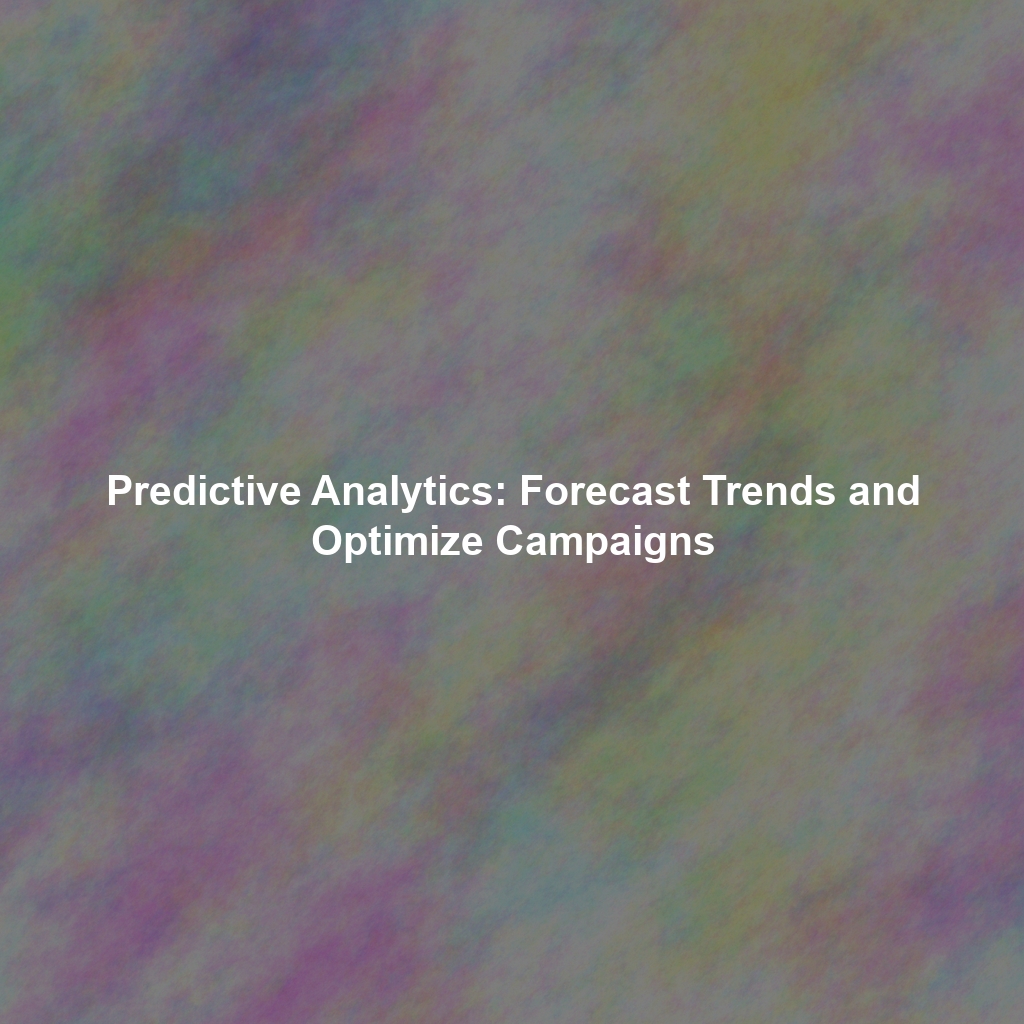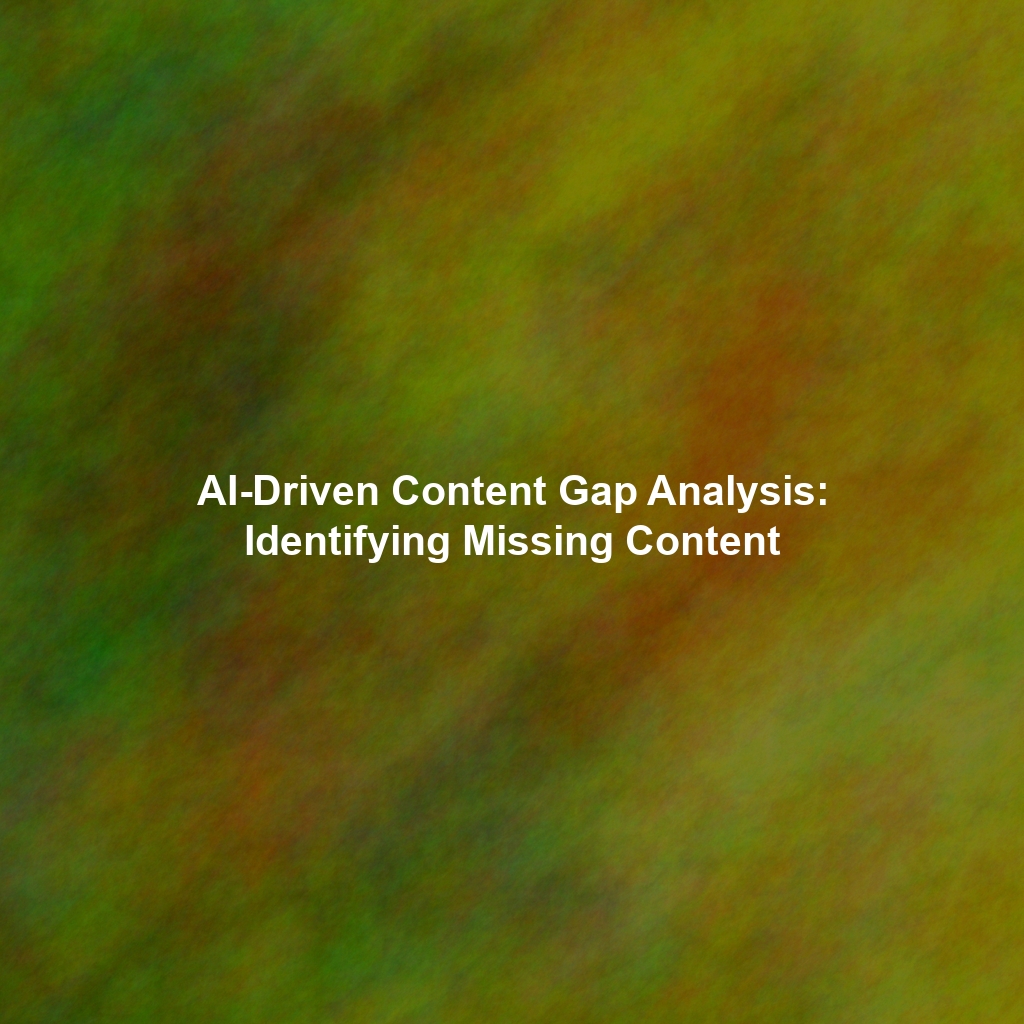Understanding Predictive Analytics: Core Concepts
At its core, predictive analytics is about using past data to predict future behavior. It involves several key concepts:
1. Data Collection and Preparation: The Foundation of Accurate Predictions
The quality of your predictions is directly proportional to the quality of your data. This means gathering relevant data from various sources, including:
- CRM Systems: Customer relationship management (CRM) data provides valuable insights into customer behavior, purchase history, and demographics.
- Website Analytics: Website analytics tools like Google Analytics offer data on website traffic, user behavior, and conversion rates.
- Social Media Data: Social media platforms provide a wealth of data on customer sentiment, brand mentions, and engagement levels.
- Marketing Automation Platforms: These platforms track campaign performance, email open rates, click-through rates, and other relevant metrics.
- Sales Data: Sales figures, product performance, and market trends are essential for forecasting future sales and demand.
- External Data: Economic indicators, competitor data, and market research reports can provide valuable context and improve the accuracy of your predictions.
Once collected, the data needs to be cleaned, transformed, and prepared for analysis. This involves handling missing values, removing outliers, and converting data into a usable format. Data preparation is a crucial step that significantly impacts the accuracy of your predictive models.
2. Statistical Techniques and Machine Learning Algorithms: The Engines of Prediction
Predictive analytics employs a wide range of statistical techniques and machine learning algorithms to identify patterns and relationships in data. Some of the most commonly used methods include:
- Regression Analysis: Used to predict a continuous outcome variable based on one or more predictor variables. For example, predicting sales based on advertising spend.
- Classification Algorithms: Used to classify data into predefined categories. For example, identifying customers who are likely to churn. Common algorithms include Logistic Regression, Support Vector Machines (SVM), and Decision Trees.
- Time Series Analysis: Used to analyze data points collected over time to identify trends, seasonality, and patterns. This is often used for forecasting sales or website traffic. Common methods include ARIMA (Autoregressive Integrated Moving Average) and Exponential Smoothing.
- Clustering Algorithms: Used to group similar data points together based on their characteristics. This can be used to segment customers into different groups based on their behavior and preferences. Common algorithms include K-Means and Hierarchical Clustering.
- Neural Networks: Powerful algorithms that can learn complex patterns in data. They are often used for more complex predictive tasks, such as image recognition and natural language processing. In marketing, they can be used for predicting customer sentiment or identifying fraud.
The choice of the appropriate algorithm depends on the specific problem you are trying to solve and the characteristics of your data. Experimentation and validation are key to finding the best approach.
3. Model Building and Validation: Ensuring Accuracy and Reliability
Once you have chosen an appropriate algorithm, you need to build a predictive model using your prepared data. This involves training the model on a portion of your data (the training set) and then testing its performance on a separate portion of your data (the validation set). The validation set helps to ensure the model generalizes well to new, unseen data.
Several metrics can be used to evaluate the performance of a predictive model, depending on the type of problem you are solving. Common metrics include:
- Accuracy: The percentage of correct predictions.
- Precision: The proportion of positive predictions that are actually correct.
- Recall: The proportion of actual positive cases that are correctly identified.
- F1-Score: The harmonic mean of precision and recall.
- RMSE (Root Mean Squared Error): Measures the average magnitude of the errors in your predictions.
It’s important to iterate on your model, refining it based on its performance on the validation set. This may involve adjusting the algorithm’s parameters, adding more features to the data, or even trying a different algorithm altogether. This iterative process is essential for building a robust and accurate predictive model.
Practical Applications of Predictive Analytics in Marketing
Predictive analytics offers a wide range of applications in marketing, enabling businesses to make more informed decisions and achieve better results. Here are some key examples:
1. Customer Segmentation and Targeting: Reaching the Right Audience
Predictive analytics can be used to segment customers into different groups based on their behavior, preferences, and demographics. This allows marketers to tailor their messaging and offers to specific segments, resulting in higher engagement and conversion rates. For example, you can predict which customers are most likely to respond to a particular promotion or which customers are most likely to purchase a specific product.
By understanding the needs and preferences of each segment, you can create more personalized and relevant marketing campaigns, improving customer satisfaction and loyalty.
2. Churn Prediction: Retaining Valuable Customers
Customer churn, or the rate at which customers stop doing business with a company, can be a significant drain on resources. Predictive analytics can help identify customers who are at risk of churning, allowing marketers to proactively intervene and prevent them from leaving. By analyzing historical data, such as purchase history, customer service interactions, and website activity, you can identify patterns that indicate a higher likelihood of churn.
Once you have identified at-risk customers, you can take steps to address their concerns and retain them. This might involve offering personalized discounts, providing improved customer service, or addressing any issues that they may be experiencing.
3. Lead Scoring: Prioritizing the Most Promising Leads
Lead scoring is the process of assigning a score to each lead based on their likelihood of becoming a customer. Predictive analytics can be used to automate and improve the accuracy of lead scoring. By analyzing data on lead behavior, such as website visits, form submissions, and email engagement, you can identify the leads that are most likely to convert into sales.
This allows your sales team to focus their efforts on the most promising leads, increasing their efficiency and conversion rates.
4. Campaign Optimization: Maximizing ROI
Predictive analytics can be used to optimize marketing campaigns in real-time. By analyzing campaign performance data, such as click-through rates, conversion rates, and cost per acquisition, you can identify which aspects of your campaigns are working and which are not. This allows you to make adjustments on the fly, such as changing your ad copy, targeting different audiences, or adjusting your bidding strategy.
By continuously optimizing your campaigns based on data-driven insights, you can maximize your ROI and achieve better results.
5. Sales Forecasting: Predicting Future Demand
Accurate sales forecasting is essential for effective inventory management, resource allocation, and financial planning. Predictive analytics can be used to forecast future sales based on historical sales data, market trends, and other relevant factors. This allows you to anticipate future demand, optimize your inventory levels, and avoid stockouts or overstocking.
Improved sales forecasting can lead to significant cost savings and increased profitability.
Implementing Predictive Analytics: A Step-by-Step Guide
Implementing predictive analytics within your organization requires a strategic approach. Here’s a step-by-step guide to help you get started:
1. Define Your Goals: What Do You Want to Predict?
The first step is to clearly define your goals. What are you trying to predict? What business problems are you trying to solve? This will help you focus your efforts and ensure that you are collecting the right data and using the appropriate techniques. For example, are you trying to predict customer churn, optimize your marketing campaigns, or forecast future sales?
2. Gather and Prepare Your Data: The Foundation of Success
Collect relevant data from various sources, including your CRM system, website analytics, social media platforms, and marketing automation platforms. Clean and transform your data to ensure its accuracy and consistency. This may involve handling missing values, removing outliers, and converting data into a usable format. Data quality is critical for accurate predictions.
3. Choose the Right Tools and Technologies: Empowering Your Analysis
Select the appropriate tools and technologies for your predictive analytics projects. There are many options available, ranging from open-source tools like R and Python to commercial platforms like SAS and IBM SPSS. Choose tools that are aligned with your skills, budget, and requirements.
4. Build and Validate Your Models: Ensuring Accuracy and Reliability
Build predictive models using the chosen algorithms and data. Train your models on a portion of your data and then validate their performance on a separate portion of your data. Iterate on your models, refining them based on their performance on the validation set. This iterative process is essential for building robust and accurate predictive models.
5. Deploy and Monitor Your Models: Putting Predictions into Action
Once you have built and validated your models, deploy them into your marketing systems and processes. Continuously monitor the performance of your models and make adjustments as needed. The marketing landscape is constantly evolving, so it’s important to regularly update your models to ensure their continued accuracy.
6. Integrate with Existing Systems: Seamlessly Embedding Insights
Ensure that the predictive analytics insights are seamlessly integrated into your existing marketing systems and workflows. This may involve integrating with your CRM, marketing automation platform, or other relevant tools. The goal is to make it easy for marketers to access and use the predictive insights to make better decisions.
7. Educate and Train Your Team: Empowering Data-Driven Decisions
Provide training and education to your marketing team on how to interpret and use the results of your predictive analytics models. This will empower them to make more informed decisions and achieve better results. Encourage a data-driven culture within your organization.
Challenges and Considerations
While predictive analytics offers significant benefits, it’s important to be aware of the challenges and considerations involved in its implementation:
- Data Quality: The accuracy of your predictions depends on the quality of your data. Poor data quality can lead to inaccurate predictions and flawed decisions.
- Model Complexity: Overly complex models can be difficult to interpret and may not generalize well to new data. It’s important to find a balance between model complexity and accuracy.
- Data Privacy and Security: When collecting and using customer data, it’s important to comply with data privacy regulations and ensure the security of your data.
- Ethical Considerations: Be mindful of the ethical implications of using predictive analytics. Avoid using it in ways that could discriminate against or harm individuals.
- Lack of Expertise: Implementing predictive analytics requires specialized skills and expertise. You may need to hire data scientists or consultants to help you get started.
Conclusion: Embracing the Future of Marketing
Predictive analytics is transforming the way marketers make decisions. By leveraging the power of data and statistical techniques, marketers can forecast trends, optimize campaigns, and achieve a higher ROI. While there are challenges and considerations to keep in mind, the potential benefits of predictive analytics are significant. By embracing this powerful technology, businesses can gain a competitive edge and thrive in today’s dynamic marketing landscape.
The future of marketing is data-driven. Start exploring predictive analytics today and unlock the power of seeing the future.
 Skip to content
Skip to content

